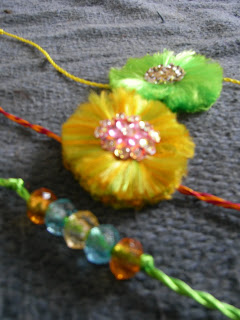What changed my pessimistic view and gave me a light of hope is my visit to one of the Youth Resource Centers in a rural village near Udaipur.
The village is located about an hour away from Udaipur. I visited the center twice, once in mid-June and once recently. What I saw on my way to the village recently took me by surprise. I remember back in mid-June when people were praying for the rain as the lakes around the city were dried up and the once beautiful tourist spots were turned into cricket fields. On the way to the village, I saw the trees on the hills dried up and all I could see was a brownish gray vastness. Someone told me that with one drop of rain the whole hill will come alive. Recently I saw that magical transformation happen. The once gray and brownish vastness has turned into a mosaic of different shades of green and yellow. As I listened to the Hindi music playing on the bus and a cool breeze touched my cheeks, I really felt that "water is the source of life.”
I went back to the center for the second time with an important purpose in mind. The first time I visited center, I was shown the various works of the youth ranging from glass paintings, tiny arts and crafts to the magazine published by the youth. These were no doubt amazing works, but what really grabbed my attention were the photos that the youth took after receiving a photography workshop. The photos told so many stories; a picture of the view of the grand palace hotel in the area was juxtaposed with the locals wearing worn out saris on the streets, carrying baskets, who would never be given the chance to even see the lobby of the hotel; a picture of a wooden table covered in a turquoise silk cloth with offerings and other religious ceremonial equipments on it, with bright magenta flower petals spread all over the table and the floor – a representation of the culture and the religious life in the area.
This reminded me of the documentary “Born into Brothels” which documented how the photographer Zana Briski taught the children who were born in brothels in Calcutta photography skills in order to give them self-confidence and allow the outsiders to see the tabooed red-light district from the children’s eyes. The photographs they took were exhibited and are even on sale on the website of the non-profit “Kids with Cameras.” The education level of these village youth may not be very high but with their new acquired skill, they now possess the tool needed to express their opinion and to raise issues in their community. Pictures may even be a better medium to present these issues, considering the low level of education of the majority of the villagers.
I went back to the village wanting to ask the youth if they would like to submit their photos to online photo contests so that an even larger audience can see their work. They were very interested in doing so and I will be going back to village next week to talk directly to the young photographers. Even if photography skills wouldn’t bring them income, it gives them a sense of self-worth and a sense that they are part of the community. The moral of the lesson that I learned is that empowering the youth is not just about giving them vocational trainings that would give them economic power; it is also about training them on critical thinking skills and social responsibilities so that one day they can become leaders of their own community.






